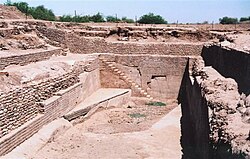
This list of inventions and discoveries of the Indus Valley Civilisation lists the technological and civilisational achievements of the Indus Valley Civilisation, an ancient civilisation which flourished in the Bronze Age around the general region of the Indus River and Ghaggar-Hakra River in what is today Pakistan and northwestern India.



